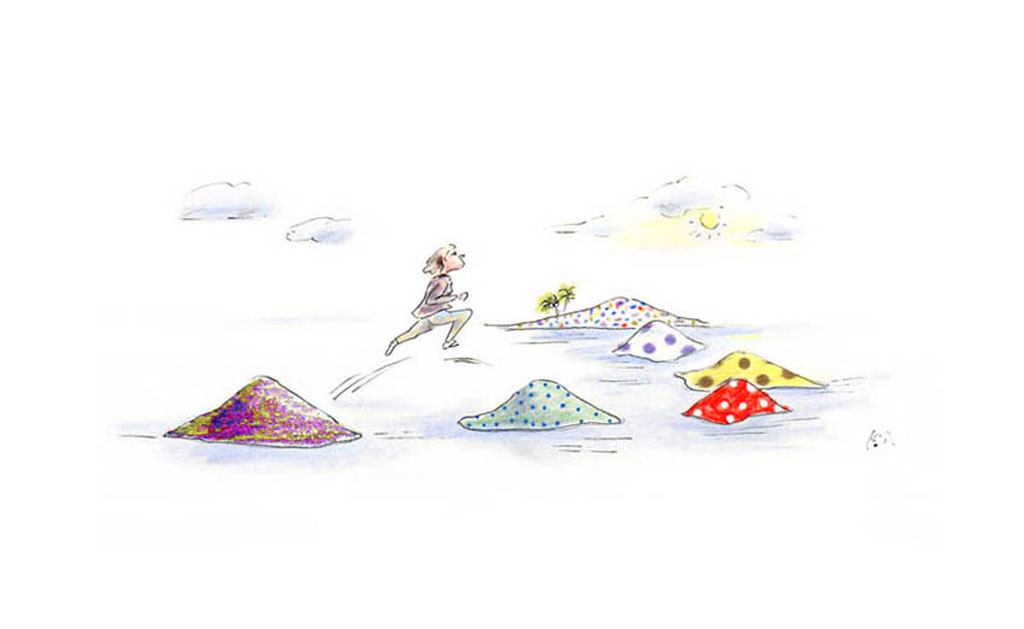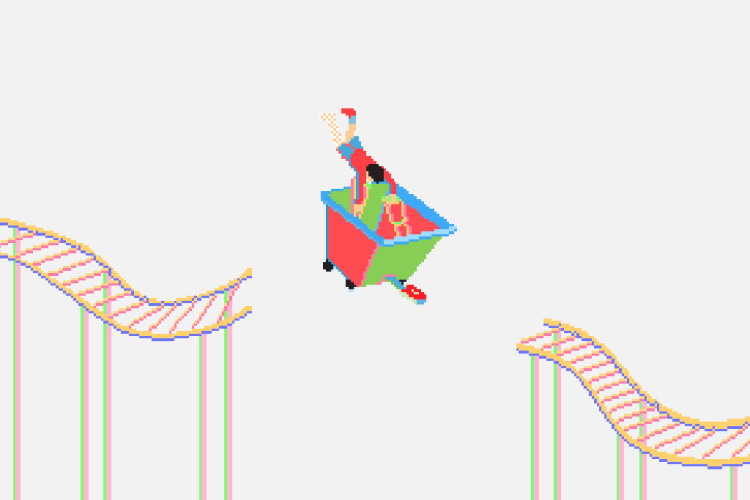Art Across the Sea
The potential of contemporary art spaces of Setouchi Triennale

When we think about contemporary art spaces, we rarely think about remote landscapes with an ageing population and dying traditional industries. This is precisely the challenge that Japan’s Setouchi Triennale takes up, with their aim of returning the vitality of the Setouchi area.
The coastal areas that surround the Seto Island Sea – its beaches, lakes, paddy fields, granite quarries, and in some places, even olive gardens – make up for what’s known as the “Setouchi” region. While this may paint an idyllic picture at first mention, in reality they present aspects of Japan we seldom think about. For instance, in some parts of the islands transportation remains problematic, and it’s common for local youth to flee their villages for the attraction of the bigger towns and cities, leaving the elderly to maintain the area’s livelihood.
These issues aside, the Setouchi Triennale offers a unique experience. With both temporary and permanent artworks spread out across the area, visitors must hop between the islands to visit them. If the possibility of island hopping across the pristine sea of Japan’s southern parts to see contemporary art isn’t enough to fuel your curiosity, then perhaps the fact that the Triennale is divided into 3 seasons might – visitors are able to visit in the Spring, Summer and Autumn, bearing in mind the impact of the seasonal changes for the artworks and the areas they are sited in.
The Triennale also has an ambience that’s far from the usual large-scale art events, which tend to feel like glitzy, big-budget productions that alienate the local communities. Convincing these communities to participate must be a daunting task, but the organizers’ hard work was paid off in different ways. The all-around hospitality of the village residents is proof, not to mention the number of art projects that directly involve them in various ways.
The summer session of the Setouchi Triennale kicked off last 19th July with an opening banquet at the town of Takamatsu, Kagawa Prefecture. Takamatsu is the main port that you need to get to from the bigger cities such as Tokyo or Osaka to enter the Setouchi region. From Takamatsu, your journey to the other islands will be done by ferry and high-speed boats, and as well as by buses, walking, or cycling once you get to your chosen destination.
When visiting, preparation is crucial: many of the area guides provided are in Japanese only, and finding English-speaking staff is difficult. Be careful of the ferry’s schedules, as missing them might mean you staying overnight. Although in larger places such as Naoshima Internet service is provided in the information centre, don’t expect to find this in the smaller islands.
During the Triennale seasons, Naoshima is the island that is most likely to be overcrowded: it’s home to the Chichu Art Museum, the Benesse House, the Lee Ufan Museum and the Ando Museum – all designed by renowned Japanese architect Tadao Ando. During my visit to the Tando Museum, the architect was hosting a talk in the intimate space, which surely gathered up a crowd.
Nearby, a queue snaked to go inside James Turrell’s Backside of the Moon 1999 – a friend actually had to wait 2 hours! There are also two of Yayoi Kusama’s famous giant pumpkins here, including the Giant Red Pumpkin located right by the port of Miyanoura.
Also in Naoshima, Shinro Ohtake’s wonderfully kitsch Naoshima Bath invites visitors to take a bath inside it for JPY500 – just remember to bring your own towel. This works sits nearby the newly opened Miyanoura Gallery 6, a renovated pachinko parlour currently exhibiting Yoichi Midarikawa’s photographs of the lives of Naoshima’s residents in the 1950s.
Ogijima provides a different experience altogether. With a population of a mere 145 people as well its steep and narrow footpaths, the island is an extraordinary setting for contemporary art. The works are located in 3 different sites: the village centre, near the fishing port, and the lighthouse. As you approach Ogijima Port, you can’t miss Spanish artist Jaume Plensas’ Ogijima’s Soul. The roof of this all-white structure is made up of a latticework of letters that project shadows to the ground during the day, and at night, projects into the sky caused by the light inside the space.
Throughout the island, artworks interlace residents’ houses and public spaces, many with subtle references to island’s history: Bunpei Kado’s Air Diver takes up Ogijima as a theme, where Kado created islands and ships propped up by thin metal rods that stand on top of old Japanese furniture. Taking up an old storehouse, Mayumi Kuri’s Memory Bottle presents exactly what it says: various objects that represent memories of life in Ogijima in almost 1.000 clear bottles, vertically hung and lit by tiny light bulbs.
Imagine all this, but in 10 more islands: while the first Setouchi Triennale in 2010 only utilized 5 islands, this year’s event expanded to 12 participating islands. Also unique to the 2013 Triennale is the opening of the Fukutake House, sited in a disused schoolhouse in a remote district of Shodoshima Island, called Fukuda. This space is designed to house the “Asia Art Platform”, aimed at displaying collaborative practices from different art organizations in Asia.
7 Asian countries participated in Fukutake’s House first year, including Indonesia. Indonesia was represented by Cemeti Art House (Jogjakarta) and Irwan Ahmett (Jakarta), who exhibited a video-installation made in collaboration with other artists and initiatives such as the Jatiwangi Art Factory.
Titled A Vulnerable Bubble, the work articulates the effects of globalization to the very specific cultures and lifestyles of traditional villages. Research for this work was done both in Indonesian (Jatisura) and Japanese villages (Fukuda), and its findings were juxtaposed and projected onto a large balloon, which is installed inside an old classroom.
There are sceptical nods to the Setouchi Triennale’s overall venture: will it succeed in fulfilling its aims of reviving the declining region? Have the long-term impacts of tourism – which the event essentially boosts – been carefully considered? Yet, one cannot help but also mull over the success of the Echigo-Tsumari Triennale – brainchild of Fram Kitagawa, the same man responsible for the Setouchi Triennale – and acknowledge that, if it’s made as part of a more extensive development program, then the event stands on some very promising grounds.











